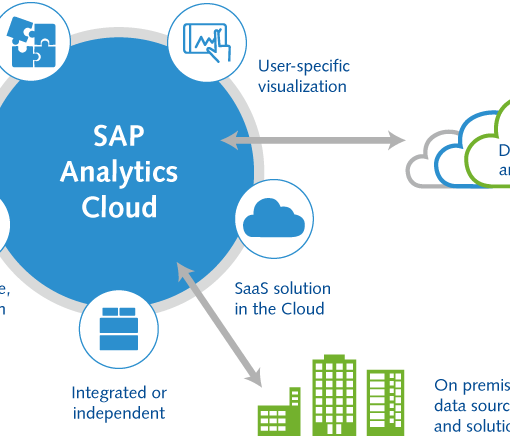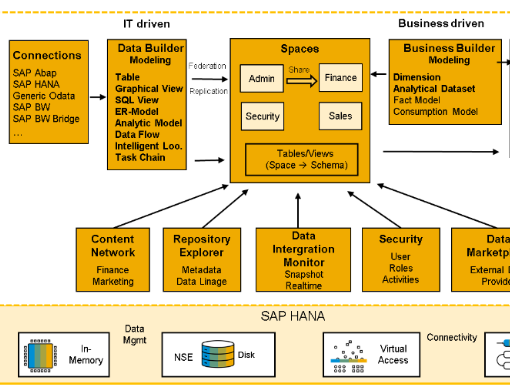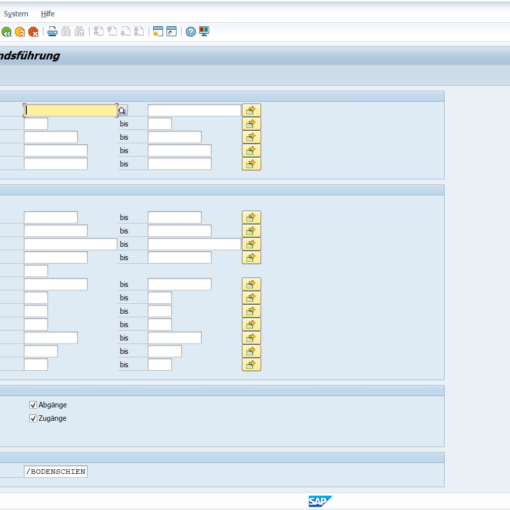The SAP S4 HANA benefits for your company are expanding. The fourth ERP suite created by SAP themselves, S/4HANA, has swiftly emerged as their most effective ERP system. S/4HANA makes it possible for businesses to operate smoothly in the digital economy.
The majority of business users are aware of the key value-adding features of SAP S/4HANA, but it also offers users other advantages, such as, but not limited to, management and administration simplification and centralization, user-friendliness, cost effectiveness, innovation, improved performance and speed, and an all-around seamless migration from on-premise to the cloud.
Putting SAP S/4HANA into practice in your company will have a significant positive impact on your bottom line. Many advantages might be obtained through a switch to SAP S/4HANA by utilizing pertinent expertise gained from working with top firms in the consumer goods market.
According to SAP, S/4HANA is their in-memory database and intelligent ERP system that operates on SAP HANA. Through its streamlined data model and intelligent automation, this technology has the potential to alter both business and IT activities, delivering extraordinary outcomes.
The best business advantages
Numerous SAP S4 HANA benefits for organizations, according to experts, include flexibility, lower costs, and quicker analytics thanks to the HANA in-memory database. Additionally, the system can be simpler to use than ECC and make the move to the cloud less difficult. Nine of the top business advantages of SAP S/4 HANA are listed here.
1. Business models are simpler to update.
SAP ECC was created for business models that haven’t had to adapt as quickly as they do now to keep up with a variety of factors, such as cutting-edge technology, rising consumer demands, supply chain disruptions, and hybrid workforces. According to a senior program manager and SAP practice lead at Clarkston Consulting, firms may pivot to new business models more readily with SAP S4 HANA benefits due to enhanced capabilities to use data. Built from the ground up, SAP S/4HANA takes into consideration the way businesses operate today. “This platform is easier and quicker to enter into these new sectors,” he said, “whether you want to make modifications, acquire firms, or [create] new sales channels.”
2. Acquisition integration into the ERP environment is made simpler.
In the realm of consumer packaged goods, businesses acquire smaller brands in order to enter new markets and add complementary items to their lineup. Prior to SAP S/4HANA, they had to integrate these acquisitions into their primary ECC systems, which required a significant amount of time and money. Businesses don’t necessarily need to integrate acquisitions into their core functions using S/4HANA, instead, they may maintain them on the SAP public cloud. SAP S4 HANA
S/4HANA integrates master data governance and global available-to-promise (Global ATP) services into the core. Lower ownership and maintenance expenses from an infrastructure standpoint result from managing fewer units.
According to a SAP solutions architect at managed cloud provider Syntax, S/4HANA’s shared infrastructure enables enterprises to move away from bare metal infrastructures that need to be upgraded every five years. With SAP’s virtualization and public or private cloud deployments, businesses may now combine their infrastructure.
According to Low, switching from the outdated physical infrastructure to the more cloud-native environment provided by S/4HANA may save businesses between 11 and 17 percent on IT expenses. But preparation is important. He advised that failing to properly prepare the migration might result in cost overruns while upgrading from ECC or any other ERP system. SAP S4 HANA
4. Quicker analytical understanding
S/4HANA’s in-memory database, HANA, allows for dramatically better speed. According to Low, its intelligent data architecture minimizes aggregate tables and data redundancy for increased efficiency. The basic ERP system now offers analytics and quicker insights rather than storing data in a data warehouse and waiting for it to load.
Low argued that having both business transactions and analytics capabilities in the same system speeds up insights. Without having to hop between systems and apps, he said, “This enables organizations to simply and swiftly make choices and complete business operations in one single application utilizing a single source of data.”
5. Improved forecasting
S/4HANA’s embedded AI and machine learning applications are still developing gradually but rapidly to enhance modeling, predictive results, and forecasting. For instance, a merchant may utilize the Universal Data Element Framework to estimate demand based on previous data and incorporate external variables like the weather. The store might then create a model that could forecast the demand for a certain product in a given area.
6. Quicker period-endings
A speedier database should result in quicker end-of-period closings for the financials. Businesses may obtain reports that indicate their current financial situation and real-time accounting reconciliation, and S/4HANA also enables them to perform predictive accounting by utilizing AI and machine learning.
7.Proactive maintenance of assets
Companies may combine industrial IoT sensors with S/4HANA for predictive analytics, especially on the manufacturing shop floor, to monitor assets and get warnings if a machine is malfunctioning. This is made possible by the in-memory database, machine learning, and AI. “The sensors operate around-the-clock and continuously track movement, temperature, and vibration.” According to baseline measures, he said, businesses can forecast when a machine requires maintenance or might fail in order to prevent more expensive repairs or unforeseen shutdowns.
8. A more user-friendly UI
For more than 20 years, SAP didn’t give up on its GUI, the recognizable user interface. However, SAP redesigned it to better represent improved business processes. Additionally, businesses may do typical business processes on iOS and Android smartphones using the SAP Fiori user interface. This HTML5-based (SAPUI5) platform is either integrated into S/4HANA or offered as a separate module.
9. Automate tedious jobs.
S/4HANA offers light process automation, enabling enterprises to automate regular processes that were previously completed manually, such as running reports, freeing up employees to concentrate on more productive activities. Business operations may be accelerated and streamlined by using robotic process automation solutions.
Conclusion:
SAP S/4HANA has emerged as a game-changer in the worldof enterprise resource planning, offering a range of benefits that drive business transformation. With real-time data and analytics, simplified user experience, enhanced process efficiency, advanced analytics and reporting, cloud and mobility capabilities, and a future-ready foundation for innovation, SAP S/4HANA empowers organizations to unlock their full potential. By harnessing the power of real-time insights, businesses can make informed decisions, streamline operations, improve customer experiences, and stay ahead in today’s competitive landscape. Embracing SAP S/4HANA is a strategic step towards digital transformation and ensures organizations are well-positioned for success in the digital age.





